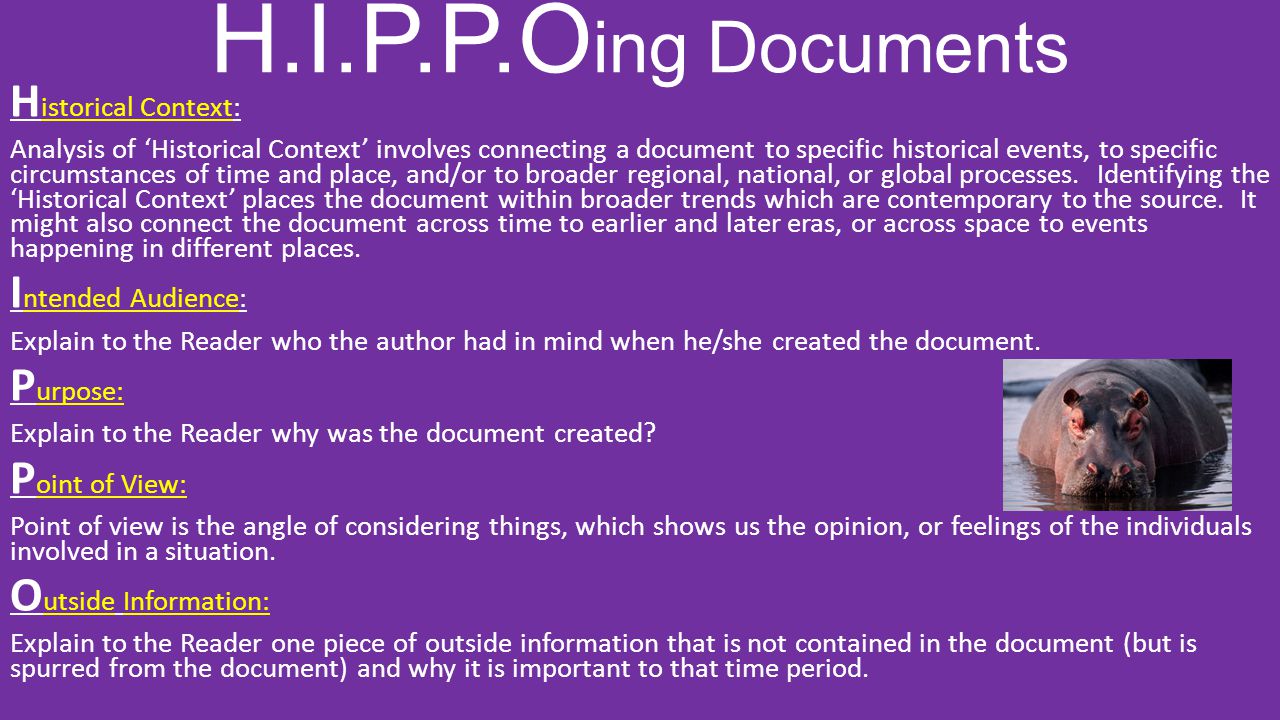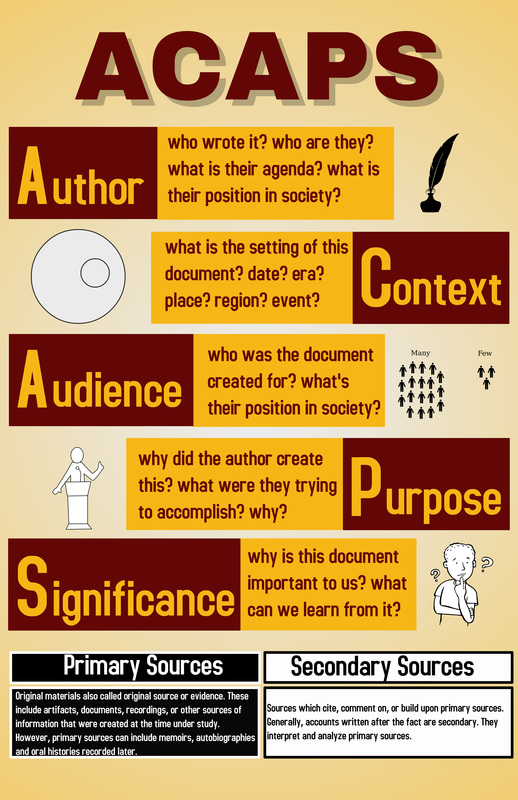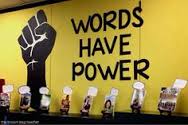|
Students will find it useful to analyze primary source material regularly to deepen their understanding of the key concepts addressed in the AP World History course and to practice the required historical thinking skills. These sources must include each of the following types: written documents, maps, images, quantitative data, and works of art.
|
HIPPO: Document AnalysisH: Historical Context (aka little c): What’s the date? What was going on at the time of the document? Are there other big events that could have motivated the writer/creator/author at the time to inspire a change?
I: Intended Audience: Who did the speaker (author/creator) intend to reach? Who was meant to read, see, or hear the document? P: Purpose: Why did the speaker create this document? What is he/she trying to change? P: Point of View: What is the speaker’s position in society, and how does this impact his/her view? Does he/she convey emotion? Does he/she have a defined political, religious, or economic view that a reader should consider? Consider the context, audience, and purpose when writing POV. Outside information: What additional evidence can you tie to the documents? Can you make a connection to the argument? Can you include more evidence, separate from the Context? |
ACAPSACAPS helps us source documents by point of view.
|
Power Words & Transitions for WritingWhen writing for a history course you will often be constructing arguments to answer a question or relay information. Creating and justifying a strong argument is part of analysis. To illustrate your mastery of writing and analysis, there are some words you can use to help the reader understand your points.
|



